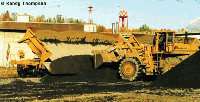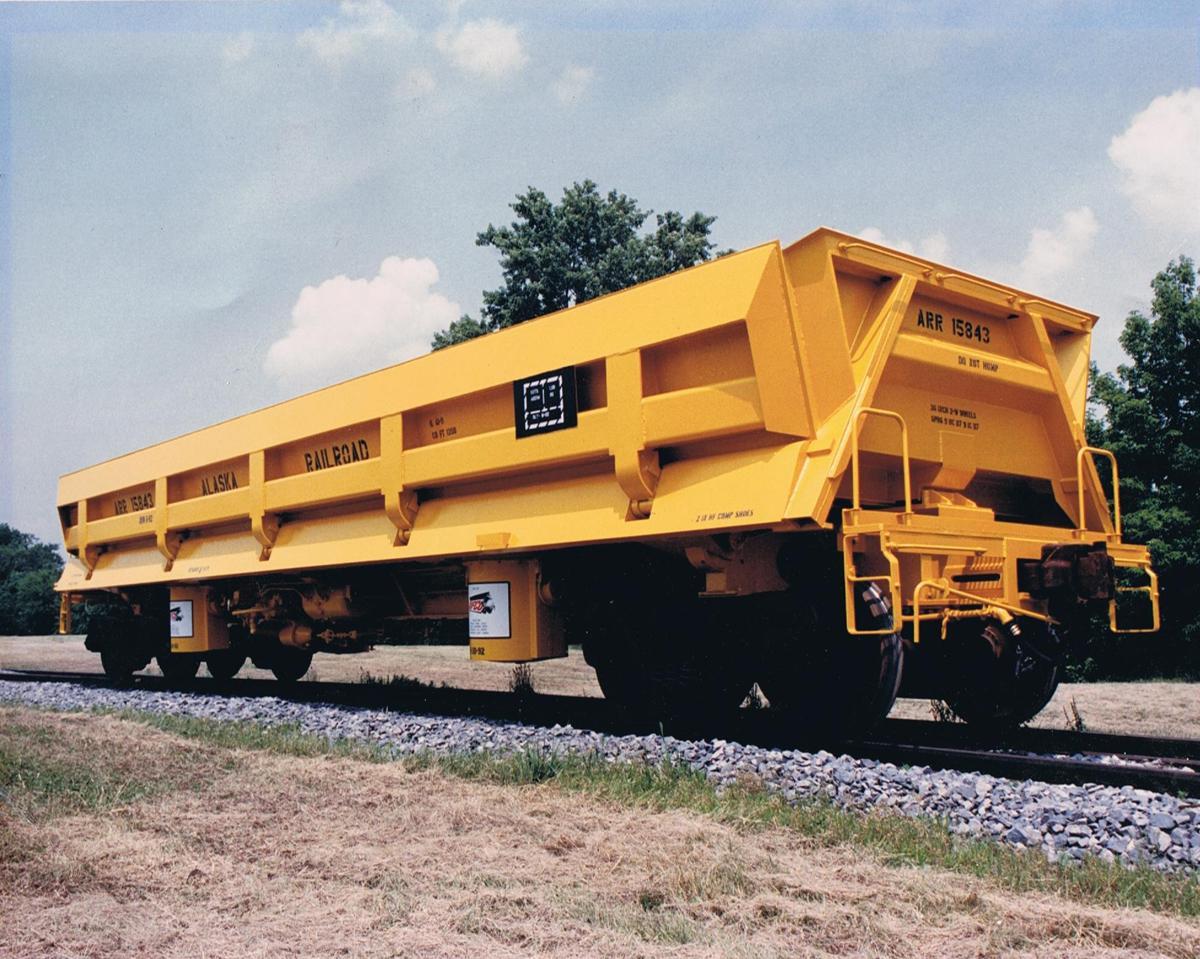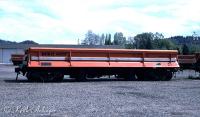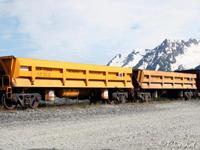 |
 |
 |
Click here for the Difco dump car's mechanical drawing
2004 Update
In the summer of 2004, the Alaska Railroad found all of their air dump cars were tied up with the Bird Creek project. They were moving 200 carloads of debris a day using two crews from May through August so other projects were suffering from lack of air dumps. They leased 26 air dumps from the Rick Franklin Corp (RFRX) and now that the season is over and their air dumps are free, they have exported them back to Oregon. Since these cars had a 70 ton capacity (as opposed to 100 tons) the railroad chose not to purchase them.
2007 Update
Notice that the dump car on the left looks newer. Extra-gang foreman Rich Holzapfel says, "We've had those four new 15900 series cars for at least four years. We were able to get them when the Difco company went out of business." Photo taken at Portage, July 2007.
Added 6/25/21: "Yes, they had been previously used by the Southern Pacific to raise their causeway across the Great Salt Lake (a big project). After that project was completed, they came on the market and Bob Hatfield arranged for us to purchase some of them in the early 90's, after a conversation I had with him whining about our ever-dwindling string of old/defective air dumps. Coming from the UP/SP, his exact words were..."I think I know where we can get some good ones." It was a great day when they showed up and we didn't have to use these anymore."
Also see 1928 ad for Western dump cars
After reviewing your car roster, I thought I would let you in on what seems to be a secret.
The lettering on the Difco dump cars for Alaska built in the 1990's was actually blue lettering when the cars left the shop (I can't speak to the lettering on the older cars, but I would be surprised if it were different).
The director of operations at the time was a huge University of Michigan fan, so all the Ohio State fans in the shop had to listen to him go on about it the whole time they were being built (the yellow/blue color scheme).
After a few years you have to be REALLY close (like a couple feet away) to be able to tell. They must have faded over time.
I honestly can't remember if those reporting marks were decals or paint at the time those cars were built. If they were paint, the mad rush to bring water based paint to market around the same time might explain why they faded so fast.
If any were re-lettered, I certainly imagine black paint was used, as the blue was very difficult to distinguish after a few years.
Also, there is a particular Alaska Railroad car I noticed was absent from your roster.
Trinity Industries built 1 or 2 depressed center flatcars for ARR in the early 2000's. These were built at the old Difco shop in Findlay. The car was designed to carry "earth moving equipment" and had rated capacity of around 110 tons. I did the design and analysis for that car, and asked my boss (at Trinity) what the loading configuration was, specifically how many pieces of equipment made up the 100+ ton load. He said "just one". Sounds like a REALLY big piece of equipment.
This may be ARR 5575. Umler says this is a 25 foot depressed center, and says it's over-width (11' wide), but I thought the car we built was wider than 11'. I suppose memory is the second thing to go.
Incidentally, Difco did not "go out of business", at least not all at once. They were purchased by Trinity Industries in 1997. Trinity ran a few orders through the shop in Findlay, then shut it down in 2002.
An interesting historical note: The original name "Differential Steel Car Company" (started in the 1920's) was in reference to a "differential cable windlass" mechanism used to power the dumping cycle on the original concept for the dump cars designed by the founder.

As built photo
See also:
- Close up photos of dump cars from the Steve Silverstein collection
- Airport Branch receives a little TLC
- Videos of a gravel train in support of the Portage Curve Multimodal Connector (25, 26, 27, 29, 30, 31, 32)
- A pair of Difco dump cars in Portage 5/3/24
Page created 12/3/00 and last updated 5/14/24



